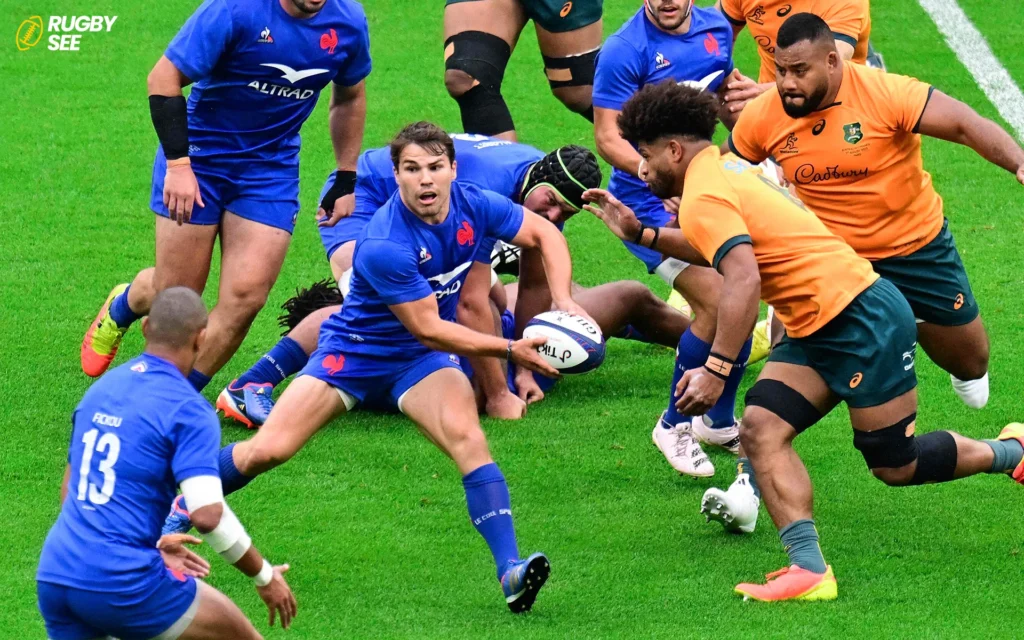In the realm of contact sports, rugby and American football stand out for their intensity, physicality, and, unfortunately, their injury rates. Fans and players often debate which sport is safer, citing various statistics and personal experiences. This article aims to delve into this discussion, comparing rugby and football in terms of safety, to provide a clearer understanding for enthusiasts and newcomers alike.
Understanding the Nature of Both Sports
Before comparing safety, it’s essential to understand the fundamental differences between rugby and football. Rugby is a continuous-play sport with fifteen players on each side, where protective gear is minimal, usually comprising mouthguards and soft padding. Football, on the other hand, involves eleven players, strategic play stoppages, and players wear helmets, shoulder pads, and other protective gear designed to absorb impacts.
Injury Rates and Types
Studies have shown that both sports exhibit high rates of injuries, but the nature and severity of these injuries can vary significantly. Football tends to have a higher rate of concussions and traumatic brain injuries (TBIs), attributed to the high-impact tackles and the use of helmets which, paradoxically, can encourage players to engage in more dangerous head-first tackles.
Rugby, while not without its risks, has been associated with fewer head injuries in comparison. This is partly due to the sport’s tackling rules, which emphasize safety and technique, requiring players to tackle below the shoulders and wrap their arms around the opponent. These rules aim to reduce the risk of head injuries for both the tackler and the carrier.

The Role of Protective Gear
The debate often centers around the use of protective gear. Football’s extensive use of helmets and pads is designed to protect players from high-impact collisions. However, some argue that this protective gear can give players a false sense of security, leading to more aggressive and dangerous play.
In rugby, the lack of extensive protective gear means players must rely more on proper technique and situational awareness to avoid injuries. This has fostered a culture of respect for one’s opponents and a focus on safety through skillful play and if you want to know more about Rugby and football diference read Tackling the Debate: Is Rugby Harder Than Football.
Safety Initiatives and Training
Both sports have taken significant steps to improve player safety. Football has seen rule changes aimed at reducing head impacts, such as kickoff modifications and stricter penalties for head-high tackles. Similarly, rugby has implemented strict concussion protocols and tackling rules to protect players.
Training and education play a critical role in both sports, with coaches and organizations emphasizing proper technique, situational awareness, and the importance of playing safely. These efforts are crucial in mitigating the inherent risks of contact sports.
The Cultural Aspect
Culturally, rugby places a strong emphasis on sportsmanship, respect, and the idea of “playing hard but fair.” This ethos extends to how players engage physically, with a focus on safety and respect for opponents. Football, while also valuing sportsmanship, operates in a context where the protective gear and the nature of the game can sometimes lead to a more aggressive style of play.
The Verdict
Determining which sport is safer is not straightforward. Both rugby and football have inherent risks, and injury rates can vary depending on numerous factors, including the level of play, coaching quality, and the players’ physical condition. However, the emphasis on technique and safety protocols in rugby has been effective in reducing certain types of injuries, particularly concussions.
It’s important for players, parents, and coaches in both sports to prioritize safety, proper training, and adherence to the rules and protocols designed to protect athletes. As both sports continue to evolve, ongoing research and improvements in safety measures will be crucial in ensuring the well-being of players.

Exploring the Science of Sport Safety
In recent years, the scientific community has taken a keen interest in comparing the safety profiles of rugby and football. Advanced research methods, including biomechanical analysis and epidemiological studies, have shed light on injury mechanisms and prevention strategies. This scientific approach helps inform coaches, players, and policymakers about best practices for reducing injuries in both sports.
Preventative Measures and Injury Management
Preventative measures play a crucial role in enhancing player safety. Both rugby and football have adopted advanced training regimens focused on strengthening exercises, flexibility, and injury prevention techniques. Moreover, the implementation of early injury detection systems, such as sideline concussion assessments, has become a standard practice aimed at ensuring timely medical intervention.
Injury management has also seen significant advancements. Rehabilitation programs, return-to-play protocols, and the use of sports medicine technology are integral to player recovery. These measures not only help in treating injuries but also in preventing long-term health issues related to contact sports and if you want to know about Rugby Football read What is Rugby Football? An In-Depth Look at a Thrilling Sport.
The Impact of Rule Changes
The governing bodies of both rugby and football have made rule changes with an eye towards safety. In rugby, the “High Tackle Sanction Framework” was introduced to reduce head injuries by penalizing high tackles more strictly. Football has seen similar adjustments, with the NFL modifying kickoff rules and enforcing penalties for helmet-to-helmet hits more vigorously.
These rule changes, while sometimes controversial, have shown a positive impact on reducing the number of dangerous plays and, consequently, injuries. Continuous evaluation and adjustment of these rules are essential as our understanding of sports safety evolves.

The Role of Community and Culture in Safety
The community and culture surrounding a sport can significantly influence its safety. Rugby’s ethos, which emphasizes respect for the opponent and the referee, contributes to a culture where safety is a shared responsibility. Football, with its own strong community ties, has the potential to foster a similar culture, emphasizing player welfare and the spirit of the game over the win-at-all-costs mentality.
Engagement with players, coaches, parents, and fans about the importance of safety, respect, and sportsmanship can lead to a healthier sporting environment. Workshops, seminars, and safety campaigns are effective tools in promoting a safety-first culture in both sports.
Looking to the Future
As both rugby and football continue to evolve, the focus on safety remains paramount. Innovations in equipment, training methods, and medical care will play a critical role in safeguarding athletes. Moreover, the increasing use of technology, such as wearable sensors and video analysis, offers new avenues for monitoring player health and preventing injuries.
The ongoing dialogue between the sports science community, governing bodies, and the sports themselves is crucial. This collaboration ensures that both rugby and football can continue to adapt and improve their safety standards, benefiting players at all levels.
The debate over whether rugby is safer than football does not have a definitive answer. Both sports offer thrilling competition but also come with risks. The key to reducing these risks lies in education, proper training, and a culture that prioritizes player safety above all. As we appreciate the excitement and camaraderie that both sports provide, let’s also commit to fostering environments where safety is paramount, ensuring that players can enjoy the game they love for years to come.










